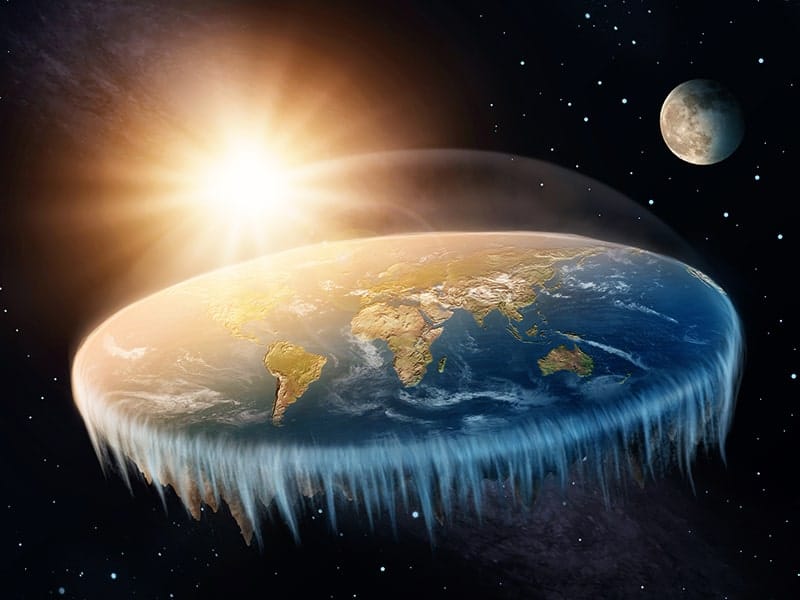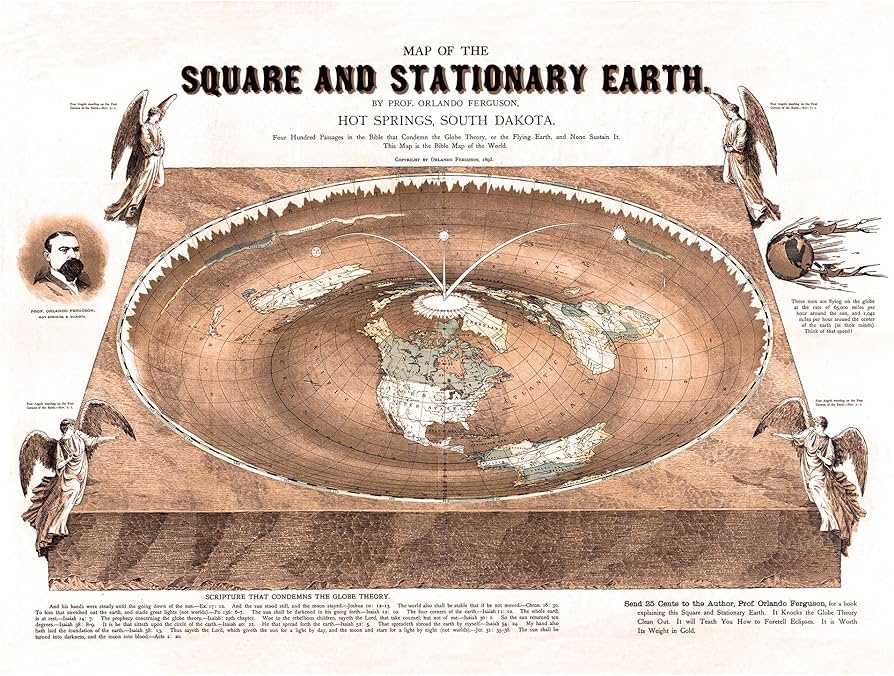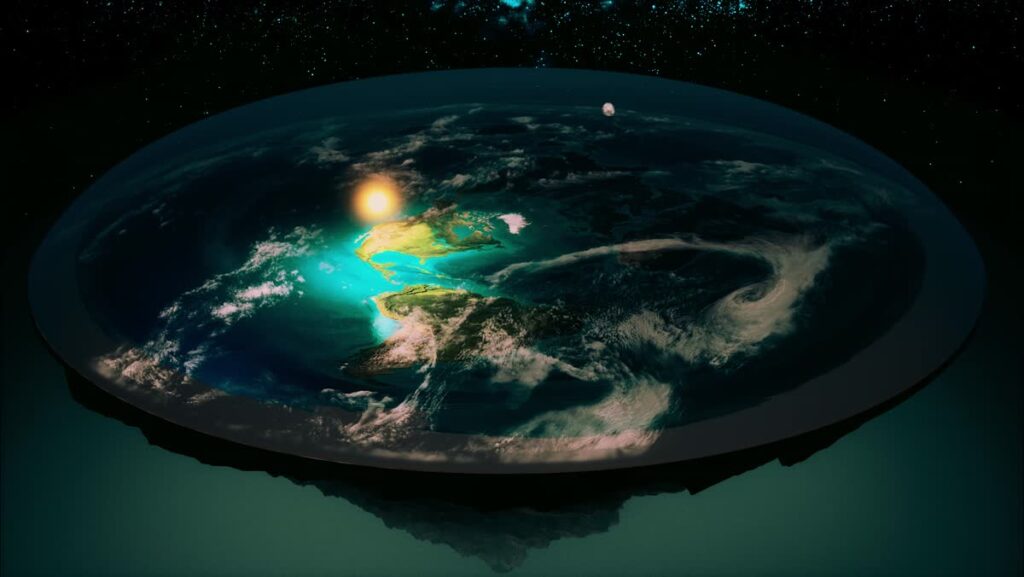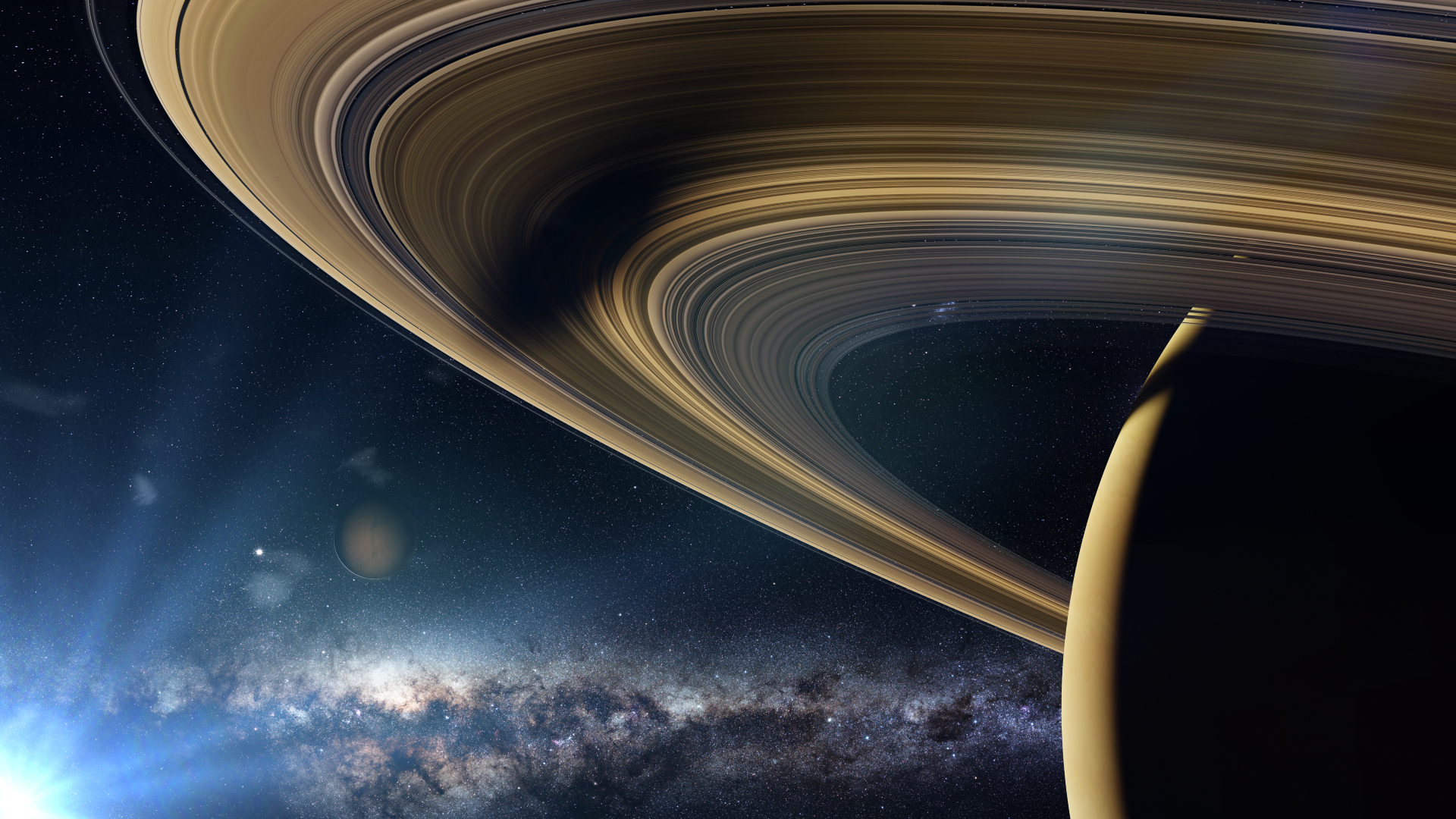Table of Contents
The Endurance of a Debunked Idea
Despite overwhelming scientific proof that the Earth is a spheroid, the Flat Earth belief continues to persist in certain communities. This idea, rooted in outdated misconceptions, has been disproven through centuries of scientific observation, yet remains alive in an era of instant access to accurate information. Ancient Greek scholars, including Aristotle and Eratosthenes, provided early evidence of Earth’s curvature, and modern technology—such as satellite imagery and GPS—has since confirmed it beyond doubt. However, some individuals reject these truths, often due to cognitive biases, misinformation, or a deep distrust of authority. Social reinforcement within conspiracy groups further strengthens this belief, making it difficult for followers to accept even the most definitive evidence contradicting their views.
The continued adherence to Flat Earth ideas reveals deeper psychological factors influencing human thought processes. Cognitive biases, such as confirmation bias and the Dunning-Kruger effect, play a significant role in maintaining these beliefs. Many adherents distrust mainstream institutions, believing they are being deceived by scientists, governments, and space agencies like NASA. Online echo chambers exacerbate this skepticism, exposing believers only to content that reinforces their views. The social dynamics within these communities provide validation, making it emotionally difficult for individuals to abandon the belief. These factors highlight how misinformation thrives when combined with psychological resistance, demonstrating that facts alone are often insufficient to change deeply held convictions.
Early Proofs from Observation
The concept of a spherical Earth dates back thousands of years, supported by direct observations and logical deductions. In the 4th century BCE, Aristotle recorded that Earth’s shadow on the moon during a lunar eclipse was always curved, which only made sense if Earth itself was a sphere. Greek sailors also noticed that as ships sailed away, their hulls disappeared from view before their masts, further confirming a curved surface. Eratosthenes provided one of the most compelling early proofs when he measured Earth’s circumference around 240 BCE. By comparing the angles of shadows in two cities, he calculated the planet’s size with remarkable accuracy. Despite these early findings, Flat Earth beliefs persist, ignoring centuries of well-documented evidence.
Additional proof of Earth’s curvature came from different civilizations across history. In India, astronomer Aryabhata described a rotating Earth in the 5th century CE, while Islamic scholars in the Middle Ages refined calculations of Earth’s size based on Greek findings. Observations from various cultures reinforced the same conclusion, yet some continued to believe in a Flat Earth model. Even today, despite satellite imagery and space travel proving Earth’s round shape, skeptics dismiss these findings. The continued rejection of scientific facts demonstrates how misinformation, personal belief systems, and a misunderstanding of historical discoveries contribute to the persistence of disproven ideas.
Scientific Confirmation of Earth’s Shape
Scientific advancements have provided irrefutable proof that Earth is a sphere. Photographs taken from space, dating back to the Apollo missions and continuing with images from the ISS, show a curved horizon with no visible edge. Gravity, as described by Newton and later refined by Einstein, explains why celestial bodies, including planets, form into spheres due to uniform gravitational pull toward their centers. Satellite technology depends on these principles, as GPS signals must account for Earth’s curvature to function accurately. Commercial airline flights also prove this reality, as their routes follow great circle paths rather than straight lines. Despite these clear scientific confirmations, Flat Earth proponents attempt to dismiss them, often claiming that all space imagery is fabricated.
The presence of Earth’s curvature is also confirmed through everyday experiences. Pilots adjust for curvature during long flights, and engineers designing bridges or canals must account for it in large-scale projects. The Coriolis effect, which influences ocean currents and wind patterns, occurs because Earth is a rotating sphere. Spacecraft must launch at precise angles to escape Earth’s gravity, which would not be necessary if Earth were flat. Astronauts aboard the ISS consistently report seeing Earth’s curved horizon, confirming what centuries of science have demonstrated. Yet, some still cling to Flat Earth claims, rejecting overwhelming evidence in favor of conspiracy theories and misinterpretations of basic physics.
Addressing Common Misconceptions
Some claim that if Earth were a sphere, people in the Southern Hemisphere should experience different physics, but this is not the case. Gravity acts uniformly across the planet, pulling all objects toward Earth’s center regardless of location. The argument that water should “fall off” a spherical Earth misunderstands how gravity works. Water remains on the planet because gravity pulls it toward the core, just as it does with everything else. Another frequent claim involves airline flight paths, which appear curved on maps. However, these are great circle routes, the shortest distance between two points on a sphere. Despite this well-documented explanation, Flat Earth proponents often dismiss these facts, relying on misconceptions rather than established physics.
Additional claims suggest that large-scale engineering projects, such as bridges and railways, should account for Earth’s curvature if it truly exists. In reality, engineers do factor in curvature for long structures, though it becomes noticeable only at extreme distances. Another argument questions why distant landmarks remain visible, yet this is easily explained by atmospheric refraction, which bends light and can make objects appear higher than they are. Observations of stars and constellations further disprove Flat Earth claims, as people in different hemispheres see entirely different night skies. Each of these points demonstrates how scientific principles explain real-world phenomena, reinforcing the accuracy of the spherical Earth model.
How Cognitive Bias Affects Perception
Cognitive biases strongly influence how people interpret information, often reinforcing pre-existing beliefs. The Dunning-Kruger effect explains why individuals with limited knowledge may overestimate their expertise, leading some to reject scientific consensus in favor of personal reasoning. This occurs when individuals misunderstand complex subjects yet feel confident in their conclusions. Confirmation bias further fuels this issue by causing people to seek information that supports their views while dismissing contradictory evidence. This is common in Flat Earth discussions, where believers focus on selectively chosen observations while ignoring centuries of verified research. The belief that mainstream science is deceptive fosters distrust, making it difficult to accept proven facts.
This resistance to new information is not unique to Flat Earth beliefs but is common in conspiracy theories. People may feel a sense of identity and belonging within these communities, reinforcing their ideas through social validation. Echo chambers, particularly on social media, amplify these biases by filtering content to align with a person’s existing views. Studies have shown that when faced with contradicting evidence, individuals often strengthen their original beliefs rather than reconsider them. The fear of admitting error can outweigh the desire for truth, making genuine discussion difficult. Understanding these cognitive biases helps explain why scientific facts alone are often insufficient to change minds and why persistent misinformation remains a challenge in modern society.

The Roots of Distrust in Institutions
A deep mistrust of mainstream institutions fuels many conspiracy theories, leading some to question widely accepted scientific facts. This skepticism often extends beyond science, encompassing governments, space agencies, and academia. The belief that organizations like NASA are hiding the “truth” reflects a broader suspicion of authority figures. Psychological studies suggest that conspiracy theories thrive when people feel powerless or disconnected from decision-making processes. In the case of Flat Earth supporters, this distrust leads them to reject overwhelming evidence in favor of alternative explanations. Social media has amplified these beliefs, creating online communities that reinforce skepticism. When misinformation spreads unchecked, it fosters a growing divide between scientific literacy and conspiracy-driven narratives, making it difficult for factual information to take hold.
Conspiracy theories often provide emotional comfort by offering simple explanations for complex topics. Many who reject mainstream science seek a sense of control over uncertainty, finding reassurance in alternative narratives. Studies show that individuals drawn to conspiracy theories often exhibit a strong need for uniqueness, valuing knowledge they believe others have overlooked. Flat Earth communities create a sense of belonging, strengthening belief through shared skepticism. When mainstream media and experts contradict their views, it only deepens their mistrust, reinforcing their conviction that they have uncovered a hidden reality. This cycle of distrust highlights the challenge of countering misinformation, as changing minds requires addressing both psychological and social influences behind these deeply held beliefs.
The Influence of Social Media Algorithms
Social media platforms have become powerful tools for spreading misinformation, often reinforcing existing biases. Algorithms on YouTube, Facebook, and other sites prioritize engagement, promoting content that keeps users watching longer. This has led to the rapid spread of conspiracy theories, as controversial content generates more interaction. Individuals searching for scientific topics may quickly be led to misleading sources, where claims are presented with pseudoscientific language and selective evidence. In the case of Flat Earth, videos often use emotionally charged rhetoric to create doubt about established science. Because social media favors content that sparks reaction, misinformation can outpace factual corrections. This cycle makes it easier for fringe ideas to gain traction, allowing alternative narratives to thrive despite overwhelming scientific evidence.
Once individuals enter these online spaces, they are often surrounded by content that continually reinforces their views. Social media creates echo chambers, where people primarily see information that aligns with their beliefs while opposing perspectives are filtered out. In discussions about Flat Earth, skeptical voices are frequently dismissed or ridiculed, making it difficult for users to engage with differing viewpoints. Studies show that repeated exposure to misinformation strengthens belief, even when evidence contradicts it. Online communities provide validation and a sense of belonging, making it emotionally difficult to accept being wrong. As a result, social media not only spreads misinformation but also creates an environment where reversing a mistaken belief becomes increasingly difficult.
Experiments That Disprove Flat Earth Theory
Multiple experiments have demonstrated Earth’s curvature, providing clear evidence against alternative claims. In the 19th century, Alfred Russell Wallace conducted a famous test using the Bedford Level canal. By placing markers at equal heights along the water, he showed that they did not align perfectly in a straight line, confirming the planet’s curvature. Modern technology continues to validate this. Satellite measurements, high-altitude balloon footage, and long-distance photography all reveal a consistent curve. Even airline pilots and engineers rely on these principles for navigation and construction. Despite this, Flat Earth supporters often dismiss such experiments, claiming manipulation or misinterpretation. Scientific methods, however, rely on repeatable and verifiable data, reinforcing conclusions drawn through direct observation and precise measurements.
Some attempts to disprove accepted science have instead confirmed it. Mike Hughes, a self-proclaimed researcher, built a homemade rocket to observe the planet’s shape firsthand. His flight, however, provided no evidence for a flat world. Similarly, a group of Flat Earth believers attempted an experiment using a laser and boards with holes to prove a flat plane. When the laser aligned with Earth’s curvature instead, they struggled to explain the unexpected result. Many similar tests have led to the same conclusion, but belief often persists despite failure. Psychological resistance, rather than scientific findings, plays a major role in maintaining alternative ideas, showing that experimental evidence alone is not always enough to change minds.

Evidence from Celestial Movements
The motion of celestial bodies provides clear evidence of Earth’s shape. The phases of the moon, observed for thousands of years, occur due to the way sunlight strikes its surface, which would be impossible on a flat plane. During lunar eclipses, Earth’s shadow appears round as it moves across the moon, a phenomenon that only occurs because Earth is a sphere. The predictable paths of planets further support this reality, as they follow elliptical orbits influenced by gravity. If Flat Earth claims were correct, planetary movements would behave unpredictably, yet observations align perfectly with spherical models. These consistent celestial patterns have been documented by astronomers for centuries, proving that the principles governing planetary motion remain unchanged and verifiable.
Star visibility also confirms Earth’s curvature. In the Northern Hemisphere, constellations like the Big Dipper remain visible year-round, while in the Southern Hemisphere, completely different star patterns emerge. This shift occurs because Earth is a rotating sphere, altering an observer’s perspective based on location. Additionally, time-lapse photography from different latitudes shows that stars appear to rotate around different celestial poles, which would be impossible on a Flat Earth model. The existence of multiple time zones further reinforces this reality, as the sun rises and sets at different times across the globe. The consistency of these astronomical observations, confirmed by centuries of scientific study, aligns with the well-established understanding of a spherical Earth.
The Flat Earth Society: A Community Reinforcing Falsehoods
One of the most recognized groups promoting alternative Earth models is the Flat Earth Society. While claiming to seek truth, they offer conflicting theories with no unified explanation for natural phenomena. Some argue Earth is a stationary disc surrounded by an ice wall, while others suggest a dome covers the sky. Unlike scientific theories, which require consistency and testability, these ideas lack empirical evidence. Attempts to explain gravity without acknowledging Earth’s curvature often fail under scrutiny. The sun’s movement and seasonal changes further expose flaws in their reasoning. Despite these contradictions, Flat Earth proponents continue spreading their claims through books, forums, and videos, drawing in those who are skeptical of mainstream science and searching for alternative explanations.
The persistence of these beliefs highlights the importance of social validation within these communities. Followers often reject critical thinking in favor of explanations that reinforce their worldview, even when presented with contradictory evidence. Psychological studies show that people are more likely to accept ideas that provide a sense of belonging, making them resistant to external correction. Many Flat Earth supporters engage in online discussions where dissenting opinions are dismissed, strengthening their belief system. Without skepticism or scientific literacy, misinformation thrives in these spaces. While scientific models are refined through observation and experimentation, alternative theories persist primarily through social reinforcement rather than factual accuracy. The challenge remains in bridging the gap between evidence-based reasoning and deeply ingrained belief structures.
Encouraging Critical Thinking and Open Discussion
Changing deeply held beliefs requires patience and thoughtful engagement. Directly confronting misinformation often causes defensiveness, making individuals more resistant to new ideas. Instead of overwhelming them with facts, a more effective approach is guiding them through critical thinking exercises. Asking questions about their sources and encouraging them to verify claims independently fosters curiosity. Teaching the scientific method helps them recognize how real evidence is gathered and tested. Simple observations, such as ships disappearing over the horizon or the way the moon casts a curved shadow during an eclipse, can create doubt in misconceptions. When discussing Flat Earth ideas, maintaining a respectful and non-confrontational tone increases the likelihood of meaningful engagement, allowing individuals to explore scientific perspectives without feeling attacked.
Many who question established science are influenced by online communities that reinforce misinformation. Social validation makes it difficult for individuals to break away from these beliefs, as they often view alternative perspectives with suspicion. A more effective way to shift thinking is gradual exposure to reliable information in a way that does not feel forced. Historical examples, like Eratosthenes’ experiment measuring Earth’s circumference, allow people to explore scientific reasoning on their own terms. Studies show that people are more likely to change their minds when they feel they have discovered the truth themselves. Encouraging independent investigation and fostering open dialogue can help those influenced by Flat Earth beliefs recognize inconsistencies and move toward a more evidence-based understanding.

Strengthening Science Education and Critical Thinking
The continued belief in disproven ideas highlights the need for stronger science education and critical thinking skills. Misinformation spreads rapidly, especially through social media, where misleading content often outpaces factual information. Many people lack the ability to critically evaluate sources, making them vulnerable to conspiracy theories. Scientific literacy is more than memorizing facts—it involves understanding how evidence is tested and verified. Teaching skepticism and logical reasoning helps individuals distinguish between credible research and false claims. In the case of Flat Earth, followers often rely on misunderstandings of physics and astronomy. Encouraging people to question sources, examine scientific consensus, and test claims against real-world observations strengthens their ability to recognize misinformation and engage in informed discussions about complex topics.
Addressing misinformation requires a culture that values curiosity and evidence-based thinking. Schools and educators play a crucial role in teaching the scientific method and emphasizing why repeatable, testable results matter. Beyond formal education, public awareness campaigns and media literacy programs can help people navigate a world filled with conflicting information. The widespread belief in Flat Earth is not just about rejecting astronomy—it reflects broader issues in how people interpret data and trust expertise. A society that prioritizes scientific literacy is better equipped to counter pseudoscience, make informed decisions, and foster a more accurate understanding of the world. Investing in education and promoting critical thinking skills ensures future generations are prepared to engage with science responsibly and thoughtfully.
How useful was this post?
Click on a star to rate it!
Average rating / 5. Vote count:
No votes so far! Be the first to rate this post.
Author
-

Meet Dr. Kendall Gregory, a highly accomplished professional with a remarkable academic background and a deep passion for empowering individuals through knowledge. Dr. Gregory’s educational journey began with a Bachelor of Science degree, followed by a Doctor of Chiropractic Medicine, focusing on diagnosing and treating musculoskeletal conditions. He further expanded his expertise with a Master's degree in Oriental Medicine, specializing in acupuncture and Chinese herbology, and a Master's degree in Health Care Administration, emphasizing his dedication to improving healthcare systems. Dr. Gregory combines his extensive knowledge and practical experience to provide comprehensive and integrative healthcare solutions. Through his writings, he aims to inspire individuals to take charge of their health and make informed decisions.
View all posts







Cant believe foolish people like this exist in this world. Maybe this article will teach people like that a thing or two.
haha yeah!
The interview with Bryce is a wild one lol